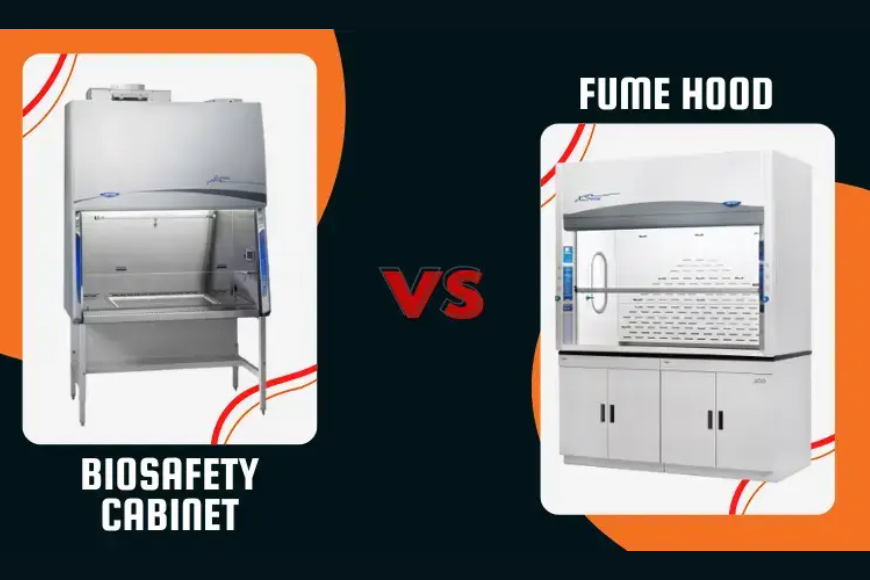BLOG

Biosafety Cabinet vs Fume Hood: Easy Explanation
Biosafety cabinets and fume hoods are essential pieces of laboratory equipment that use airflow for safety and protection in various laboratory settings across Gujarat and Vadodara.
While both devices serve a similar purpose, many people confuse the two. Understanding their differences is crucial—especially when setting up modular lab furniture in Vadodara or chemistry lab furniture in Gujarat.
What is a Fume Hood?
A fume hood is a ventilated enclosure designed to capture and remove hazardous chemical fumes, gases, vapors, and dust generated during chemical processes.
Common in labs with lab tables and modular laboratory furniture in Vadodara, fume hoods ensure the safety of lab personnel by containing airborne contaminants and expelling them outside the facility.
What is a Biosafety Cabinet?
A biosafety cabinet (BSC) is used for protection against biological hazards like pathogens. Unlike fume hoods, BSCs filter the air using HEPA filters and recirculate it, making them ideal for microbiological work and use in laboratory furniture setups in Gujarat.
Key Differences: Fume Hood vs Biosafety Cabinet
| Fume Hood | Biosafety Cabinet |
|---|---|
| Protects the user from hazardous chemicals | Protects the user and environment from biological agents |
| No HEPA filter | Equipped with HEPA filter |
| Exhausts air outside the building | Recirculates filtered air within the lab |
| Can have vertical or horizontal airflow | Always vertical airflow |
Biosafety Cabinet Airflow Explained
HEPA filtration is common in all three types of biosafety cabinets:
- Class I: Offers personnel protection only; room air is drawn across the work surface.
- Class II: Protects both personnel and product with HEPA-filtered laminar airflow.
- Class III: Gas-tight unit providing maximum protection; used for high-risk pathogens.
Fume Hood Airflow Explained
Fume hoods work by pulling air away from the lab user and venting it out. Common in labs equipped with lab furniture in Vadodara and lab tables in Gujarat, this system prevents harmful exposure.
To maintain efficiency, bulky equipment should not block the hood’s airflow path.
Conclusion
Whether you're designing modular laboratory furniture in Gujarat or choosing lab furniture in Vadodara, understanding the differences between biosafety cabinets and fume hoods is essential.
Fume hoods are best for handling hazardous chemicals, while biosafety cabinets offer protection against biological hazards. Choose the right unit based on the type of protection you need in your lab.

